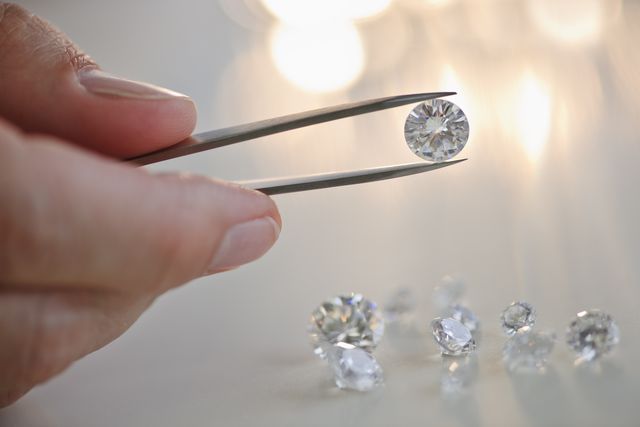
When comparing lab grown diamonds vs real diamonds, there are some key differences to note. One of the biggest differences is the cost. A natural diamond costs several times more than a lab grown diamond. Lab grown diamonds also have inclusions, which do not exist in natural diamonds. This difference may be reflected in the size, clarity, and color of the diamond.
Cost Of Lab-Grown Diamonds
A lab-grown diamond has many advantages over a natural diamond. For example, it is larger and shines more brilliantly. Furthermore, because it is an exact replica of the crystal structure of carbon, lab-grown diamonds will have the same brilliance, fire, and scintillation as a natural diamond.
Lab-grown diamonds are also more affordable than natural diamonds. Until recently, producing a diamond was a labor-intensive process that made the finished product prohibitively expensive for consumers. However, with the rise of lab synthesis, lab-grown diamonds are now widely available at an affordable price point. Moreover, the cost of production per carat of lab-grown diamonds will be significantly lower by 2020.
Size
The size of lab grown diamonds has recently come under scrutiny. Last year, the diamond company De Beers announced the opening of its largest lab-grown diamond plant, the Lightbox. The company will focus on selling “100% ethical” lab-grown diamonds. Currently, there are several companies manufacturing lab-grown diamonds, including Clean Origin, which launched its first U.S. store in 2021.
Lab grown diamonds are graded on the same scale as natural diamonds. They come with an independent grading report issued by the Gemological Institute of America. These reports have unique numbers, which are usually laser inscribed on the girdle of the stone. Lab grown diamonds have the same color and clarity ranges as natural diamonds, ranging from D to Z.
Color
There is a large range of colors for lab-grown diamonds. For example, diamonds in the ‘F’ color range are nearly colorless. This means they are nearly as transparent as D-grade diamonds. They may show slight bluish or yellowish tints under magnification, but the average buyer will not be able to tell the difference.
Colorless lab-grown diamonds are not without flaws. They are sometimes set in gold or metal to add durability and resistance to scratches. This is particularly important with diamonds that have yellow or greenish tints. These diamonds should never be confused with diamonds that are naturally colorless, however, as the green hue is often associated with surgery and blood. Therefore, some people consider green diamonds to be unlucky, while others value them more highly.
Clarity
Clarity is an important aspect to consider when purchasing a diamond. A lab-grown stone’s clarity can differ from a natural diamond’s. In both cases, the stone will have inclusions, which are visible under a 10x magnification. These inclusions can be visible in the stone as tiny cracks or scratches. Clarity and color are the two important factors to consider when deciding between lab-grown diamonds and natural mined diamonds. Lab-grown diamonds have less inclusions than natural diamonds. Lab-grown diamonds are cheaper and more environmentally friendly than mined diamonds. Their clarity is less than natural diamonds, but they can still be beautiful.
We hope these differences between lab diamonds vs real diamonds discussed above helped you understand better about this & help make the decision making easier.
